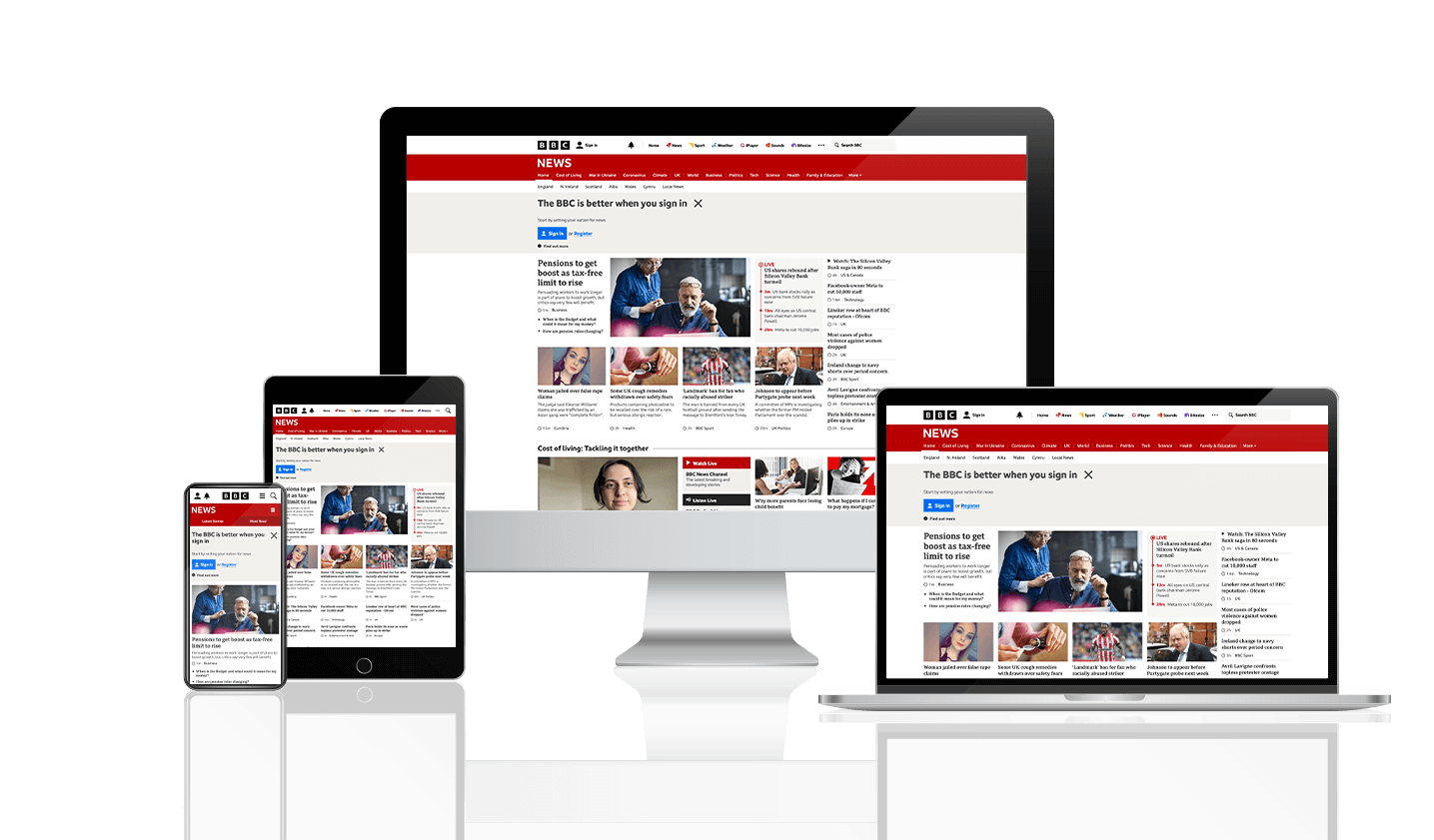How stnews.live Is a Leader in Multimedia Storytelling
The Influence of Social Network heading We Consume News Online
Social media has basically changed news intake. It supplies prompt access to information, often overshadowing typical media electrical outlets. This quick dissemination comes with difficulties. Individuals face the danger of running into misinformation and coming to be entraped in echo chambers. The algorithms driving personalized web content can cover diverse perspectives. As these characteristics advance, understanding their ramifications becomes necessary for informed interaction in public discussion. What approaches might help browse this complicated landscape?
The Development of News Consumption in the Digital Age
As innovation advanced, the means people taken in news transformed considerably in the digital age (stnews.live). Standard papers and relayed media began to decrease as the net became a main resource of information. On-line systems provided instantaneous access to newspaper article, videos, and podcasts, permitting users to remain notified any time. The convenience of mobile tools even more increased this change, making it possible for individuals to obtain updates on the go
Furthermore, the surge of news aggregators and sites assisted in the usage of diverse point of views, equipping customers to tailor their news consumption based on individual passions. This evolution additionally motivated wire service to adjust their techniques, concentrating on electronic content and engaging viewers through multimedia styles. Because of this, the traditional barriers of time and space in news delivery diminished, leading to an extra instant and tailored news experience for target markets worldwide.
The Function of Social Media Site Operatings Systems in News Circulation
Social media site systems have changed news circulation by providing instant access to details. Their algorithm-driven material curation typically focuses on involvement over precision, causing substantial trustworthiness difficulties (stnews.live). As individuals navigate this landscape, the implications for news consumption and public discourse become increasingly intricate
Instantaneous News Accessibility
Although typical news electrical outlets have actually long been the main source of information, the increase of social media systems has substantially changed exactly how news is accessed and taken in. Instantaneous news accessibility has come to be a characteristic of the electronic age, making it possible for users to receive updates in real time. Platforms such as Twitter, Facebook, and Instagram enable news to spread out rapidly, typically surpassing conventional media in rate and reach. Users can share tales, remark on occasions, and engage with journalists, creating a vibrant interaction between the target market and news material. This immediacy cultivates a culture of urgency, triggering users to inquire rapidly. As a result, the expectation for timely news has improved journalistic methods, engaging news organizations to adjust their methods to fulfill the needs of a fast-paced digital environment.
Algorithm-Driven Material
While users proactively engage with material on social media, the algorithms that regulate these systems play a pivotal duty in determining which newspaper article obtain visibility. These algorithms assess individual behavior, preferences, and interaction metrics to curate tailored news feeds. Because of this, specific stories may be magnified while others continue to be obscure, frequently prioritizing sensational or trending topics over substantive coverage. This discerning direct exposure forms customers' assumptions of existing occasions and affects public discussion. The reliance on algorithm-driven material can develop resemble chambers, where users are generally subjected to viewpoints that straighten with their very own ideas. Subsequently, the dynamics of news distribution on social media systems greatly impact exactly how individuals consume and translate details in the digital age.

Credibility Challenges
As individuals significantly transform to social media sites for news, the reputation of details come across on these systems comes to be a pressing worry. The decentralized nature of social media sites allows any individual to publish web content, typically obscuring the lines between reliable journalism and misinformation. Formulas prioritize engagement over accuracy, causing the widespread dissemination of marvelous or deceptive stories. This atmosphere postures significant obstacles for customers trying to discern credible sources. Social media site platforms, while venturing to battle misinformation with fact-checking and material small amounts, run the gauntlet for variances and prejudices in their approaches. Eventually, the obligation lies with individuals to seriously review the news they take in, as the quick spread of details frequently outpaces verification initiatives by systems.
The Surge of Citizen Journalism and User-Generated Material
The rise of citizen journalism has actually encouraged everyday individuals to share news and point of views, usually providing insights that conventional media may neglect. This change likewise presents substantial difficulties, specifically the spread of false information that can occur from unproven material. As user-generated web content comes to be extra widespread, the balance between genuine voices and precision in coverage stays an essential worry.
Empowering Daily Voices

Obstacles of False information
While the surge of resident journalism has actually opened up opportunities for varied voices in the media landscape, it has actually additionally introduced significant obstacles connected to misinformation. The ease of sharing information with social media systems permits people to share news quickly, however this quick spread typically comes with the price of precision. User-generated content regularly does not have the extensive fact-checking and content oversight that standard journalism supplies. Sensationalized or incorrect stories can acquire grip, deceiving audiences and shaping public perception. Furthermore, the mixing of opinion and fact within social networks complicates the distinction between legitimate info and false information. Because of this, consumers have to navigate a significantly complicated media environment, needing crucial assuming abilities to recognize trustworthy news sources in the middle of the noise

False information and Its Ramifications for Public Discourse
As social networks platforms progressively dominate the landscape of info dissemination, the proliferation of false information positions substantial challenges for public discussion. False information, commonly developed to misguide or prompt emotional reactions, can misshape assumptions of truth and threaten rely on credible sources. This sensation leads to polarized viewpoints, as individuals are attracted towards echo chambers that reinforce their ideas, even more setting departments within society.
The effects for public discussion are extensive. When residents rely on false information, purposeful dialogue diminishes, and the autonomous procedure suffers. Furthermore, misinformation can provoke worry and confusion, impacting public health, security, and political stability. Therefore, fostering media proficiency becomes crucial, equipping individuals to seriously examine details and recognize reality from fiction. Addressing the challenges postured by false information is crucial for preserving the stability of public discourse and making sure a knowledgeable population qualified of participating in positive conversations.
The Impact of Algorithms on News Visibility
Provided the main role of algorithms in determining material exposure, their influence on news usage is profound. These algorithms, made use of by social media sites systems, prioritize certain kinds of material based on customer interaction and preferences. Therefore, newspaper article that line up with popular fads or audience rate of interests are a lot more likely to be presented plainly, while less thrilling tales may be ignored. This produces a setting where individuals are exposed largely to info that reinforces their point of views, possibly causing echo chambers.
The consistent evolution of formulas indicates that news organizations must adapt their methods to align with these transforming parameters, commonly prioritizing clickbait or psychologically billed headings. Subsequently, the integrity of news coverage can be he has a good point endangered, as vital tales may not get the presence they should have. The algorithmic shaping of news exposure as a result plays an essential role in influencing public understanding and understanding of present occasions.
The Change Towards Aesthetic Narration in News Media
Increasingly, news media is embracing visual narration as an effective device to involve target markets. This approach leverages pictures, videos, infographics, and interactive elements to convey details extra effectively than traditional text-based formats. As attention spans shorten, visuals offer a quick, impactful way to communicate complex stories and grab viewers' interest.
Systems like Instagram and TikTok have additional increased this pattern, compelling wire service to adapt their content strategies to fit these visually-driven environments. By integrating compelling visuals, news outlets can enhance psychological connections and foster higher understanding of topical problems.
Additionally, aesthetic narration enables more diverse stories, showcasing several point of views through vibrant presentations. As audiences increasingly consume news with mobile devices, the change toward visuals not just caters to customer choices however likewise helps to break down barriers to details gain access to. Inevitably, this development mirrors a broader improvement in how news is generated and consumed in the electronic age.
Future Patterns: Navigating the Transforming Landscape of News Consumption
While helpful resources the digital landscape proceeds to advance, news usage is poised for substantial change driven by arising innovations and transforming audience habits. As expert system and artificial intelligence advance, customized news feeds will come to be more widespread, allowing individuals to obtain content tailored to their passions. This customization can lead to higher involvement but likewise elevate concerns concerning resemble chambers and misinformation.
Furthermore, the increase of voice-activated devices and clever speakers will certainly influence how news is supplied, shifting the focus from aesthetic to acoustic layouts. This trend might motivate wire service to embrace more succinct and interesting audio material.

Frequently Asked Inquiries
Just How Do Social Media Site Interactions Affect News Reliability?
Social media site interactions can greatly affect assumptions of news reputation. Engagement metrics, such as likes and shares, typically shape audience depend on, with popular messages obtaining regarded legitimacy, no matter the precision or integrity of the info offered.
What Function Do Influencers Play in Shaping News Narratives?
Influencers greatly shape news stories by leveraging their platforms to intensify specific tales, commonly tailoring material to their target market. This can result in prejudiced perspectives, impacting public perception and focusing on sensationalism over factual coverage.
Exactly How Can Users Identify Reliable News Sources on Social Network?
Customers can determine reliable news sources on social media sites by checking the resource's credibility, confirming realities via multiple electrical outlets, evaluating the expertise of the content, and acknowledging possible prejudices in reporting to guarantee precise information.
What Impact Does Social Media Carry Traditional Journalism Jobs?
Social media considerably influences traditional journalism work by altering profits versions, reducing demand for print media, and fostering competition from citizen journalists. Numerous specialists face job insecurity and must adapt to rapidly changing media landscapes.
How Do Various Demographics Consume News on Social Network?
Various demographics show diverse choices for news intake on social media sites. More youthful audiences favor systems like TikTok and Instagram for fast updates, while older people have a tendency to choose Facebook and Twitter for extra thorough conversations and short articles.